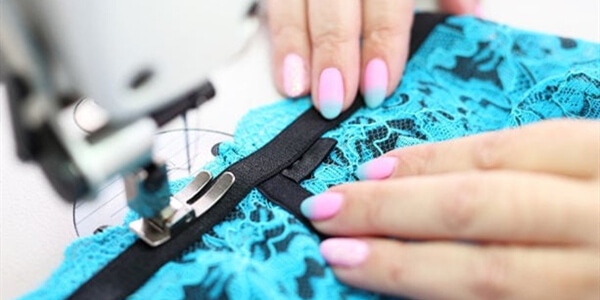
Lingerie Production Around the World: Comparing Techniques and Traditions
I. Introduction
Lingerie production is a global industry with diverse techniques and traditions. Understanding the different approaches to production is essential to appreciate lingerie's cultural and historical significance. This post will explore the variations in techniques and traditions in lingerie production worldwide, providing insights into the unique characteristics of each region's lingerie production.
II. Europe
Europe has a rich history of lingerie production, with countries like France and Italy renowned for their craftsmanship. The traditional techniques used in these countries involve meticulous attention to detail and high-quality materials. In France, lingerie is often produced using hand-sewn techniques, while knitting and lace-making are popular in Italy. There are also unique styles of lingerie associated with each country, such as the elegant and sophisticated designs of French lingerie and the bold and colorful types of Italian lingerie.
III. Asia
The lingerie industry in Asia has experienced significant growth in recent years, with countries like China, Japan, and South Korea emerging as essential players in the global market. Each country has its unique approach to lingerie production.
In China, the focus is on efficiency and cost-effectiveness. Many manufacturers use high-tech machinery and automation to increase productivity and reduce costs. The country is also known for its silk production expertise, often used in luxury lingerie.
Japan has a reputation for innovation and attention to detail. Traditional techniques like embroidery and knotting combine modern technologies to create intricate and unique designs. Many Japanese lingerie brands also prioritize comfort and functionality.
In South Korea, there is a strong emphasis on fashion and style. The country is known for its trendy lingerie designs, often featuring bold colors and patterns. Many manufacturers use high-quality fabrics like lace and mesh to create sophisticated and feminine styles.
Cultural influences are also evident in Asian lingerie production. For example, in China, red is a popular color for lingerie because it is associated with luck and prosperity in Chinese culture. In Japan, underwear is often designed to be worn as a form of outerwear, reflecting the country's fashion-forward culture.
Asia's lingerie industry is known for its innovation, fashion-forward designs, and attention to detail.
IV. North America
Lingerie production in North America is characterized by a modern approach emphasizing technology and innovation. Many companies use state-of-the-art 3D printing and scanning technology to create custom-fit lingerie for their customers. The focus on sustainability is also a growing trend in the industry, with many companies prioritizing eco-friendly materials and manufacturing processes.
In addition, there are unique and emerging trends in lingerie production in North America. For example, many companies now offer lingerie designed for women of all shapes and sizes, focusing on inclusivity and body positivity. Furthermore, there has been a recent surge in demand for functional and fashionable lingerie, with styles that can be worn in the bedroom and as outerwear.
V. South America
The lingerie industry in South America may not be as well-known as those in Europe or Asia, but it significantly contributes to the global market. Brazil, in particular, has become a significant player in lingerie production.
Traditional techniques in South American lingerie production vary by country. In Brazil, for example, many manufacturers focus on sustainable and eco-friendly production methods. The country is known for using vibrant colors and prints in lingerie design. On the other hand, Argentina tends to favor more classic and elegant styles, emphasizing high-quality materials and craftsmanship.
Despite these differences, there are also commonalities among South American lingerie producers. Many prioritize fit and comfort, using technical fabrics and design techniques to create stylish and functional lingerie.
Overall, the lingerie industry in South America may have a different global recognition than other regions. Still, it is worth paying attention to its unique and innovative approaches to lingerie production.
VI. Africa
The lingerie industry in Africa is still in its infancy compared to other regions. However, it is gaining momentum as more designers and manufacturers enter the market.
Many lingerie manufacturers use high-quality fabrics and intricate detailing to create unique and stylish pieces. In South Africa, traditional techniques are often mixed with modern technology. On the other hand, Egypt has a rich history of textile production, including cotton production, a popular fabric used in lingerie production.
Cultural influences play a significant role in lingerie production in Africa. For example, in many African countries, women wear brightly colored fabrics and bold prints. This aesthetic is often reflected in the lingerie produced in these regions, which features vibrant colors and eye-catching designs.
As the lingerie industry in Africa continues to grow, we can expect to see more unique and innovative designs emerging from this region.
VII. Conclusion
In this post, we have explored the diverse world of lingerie production and compared the techniques and traditions used across different regions. Each area has a unique style and influences, from Europe's long history to the booming industry in Asia, the modern approach in North America, and the emerging sector in Africa. It is essential to understand and appreciate this global diversity in lingerie production.
By supporting lingerie brands from around the world, we can encourage and celebrate this diversity. Let us embrace and celebrate the different techniques, traditions, and styles of lingerie production worldwide.
